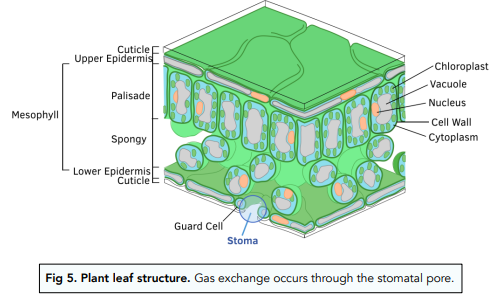Exchange Surfaces - Exchange Surfaces: Increasing their Effectiveness (GCSE Biology)
Exchange Surfaces: Increasing their Effectiveness
Single-Celled and Multicellular Organisms
Single-Celled Organisms
- Single-celled organisms have a large Sa:Vol ratio. This means that substances can easily diffuse into and out of the surfaces of their bodies. Thus, they have a high diffusion rate.
Multicellular Organisms Need a Specialised Exchange Surface
- Multicellular organisms have a smaller Sa:Vol ratio. This means that cells are too deep within their body so their body surfaces alone are not sufficient for the exchange of substances with their environment.
- Multicellular organisms also have a higher metabolic rate. Metabolic rate is the rate of chemical reactions in the body. As multicellular organisms are more metabolically active, they need to exchange more substances with their environment. Hence, they need a more specialised exchange surface in order to increase their Sa:Vol ratio.
Features of an Efficient Exchange Surface
A lot of exchange surfaces are adapted to improve their efficiency.

Mechanisms of Transport and Exchange in Large Organisms
- The small intestine is adapted for transport. The small intestine contains villi. These villi even have microvilli. This increases the surface area for transport. Moreover, it has a very rich blood supply to increase
the rate of diffusion and a short diffusion path. - The lungs are adapted for transport. The lungs have alveoli, to increase their surface area for diffusion. The alveoli also have a rich blood supply, thus keeping the concentration gradient going.
- Fish have gills for transport. The gills are a part of the fish that act as an exchange surface between blood and the water. They have an operculum, a flap, that keeps the water flowing over the gills. This maintains the concentration gradient. Within the fish, blood keeps flowing, thus maintaining the concentration gradient.

- Plants have roots for transport. These roots are very long. This increases their surface area. The surface area is further increased by root hair cells.
- Plants have leaves for transport. The leaves of plants are very flat, which increases their surface area. They also have stomata to maintain the concentration gradient and allow gases to move into and out of the leaves.
- Plants have root hair cells. These are long microscopic hairs that grow on the surface of roots of plants. This increases the surface area over which roots can absorb nutrients and water from the soil.





Still got a question? Leave a comment
Leave a comment